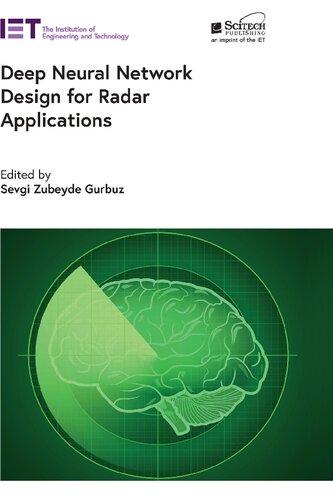

Most ebook files are in PDF format, so you can easily read them using various software such as Foxit Reader or directly on the Google Chrome browser.
Some ebook files are released by publishers in other formats such as .awz, .mobi, .epub, .fb2, etc. You may need to install specific software to read these formats on mobile/PC, such as Calibre.
Please read the tutorial at this link: https://ebookbell.com/faq
We offer FREE conversion to the popular formats you request; however, this may take some time. Therefore, right after payment, please email us, and we will try to provide the service as quickly as possible.
For some exceptional file formats or broken links (if any), please refrain from opening any disputes. Instead, email us first, and we will try to assist within a maximum of 6 hours.
EbookBell Team

4.7
26 reviewsNovel deep learning approaches are achieving state-of-the-art accuracy in the area of radar target recognition, enabling applications beyond the scope of human-level performance. This book provides an introduction to the unique aspects of machine learning for radar signal processing that any scientist or engineer seeking to apply these technologies ought to be aware of.
The book begins with three introductory chapters on radar systems and phenomenology, machine learning principles, and optimization for training common deep neural network (DNN) architectures. Subsequently, the book summarizes radar-specific issues relating to the different domain representations in which radar data may be presented to DNNs and synthetic data generation for training dataset augmentation. Further chapters focus on specific radar applications, which relate to DNN design for micro-Doppler analysis, SAR-based automatic target recognition, radar remote sensing, and emerging fields, such as data fusion and image reconstruction.
Edited by an acknowledged expert, and with contributions from an international team of authors, this book provides a solid introduction to the fundamentals of radar and machine learning, and then goes on to explore a range of technologies, applications and challenges in this developing field. This book is also a valuable resource for both radar engineers seeking to learn more about deep learning, as well as computer scientists who are seeking to explore novel applications of machine learning.
In an era where the applications of RF sensing are multiplying by the day, this book serves as an easily accessible primer on the nuances of deep learning for radar applications.